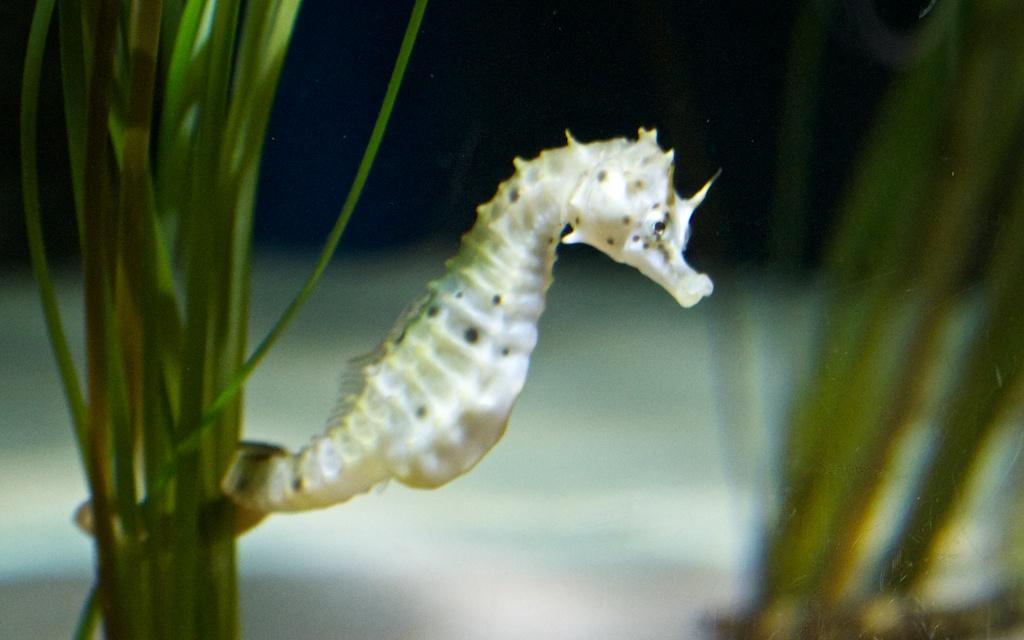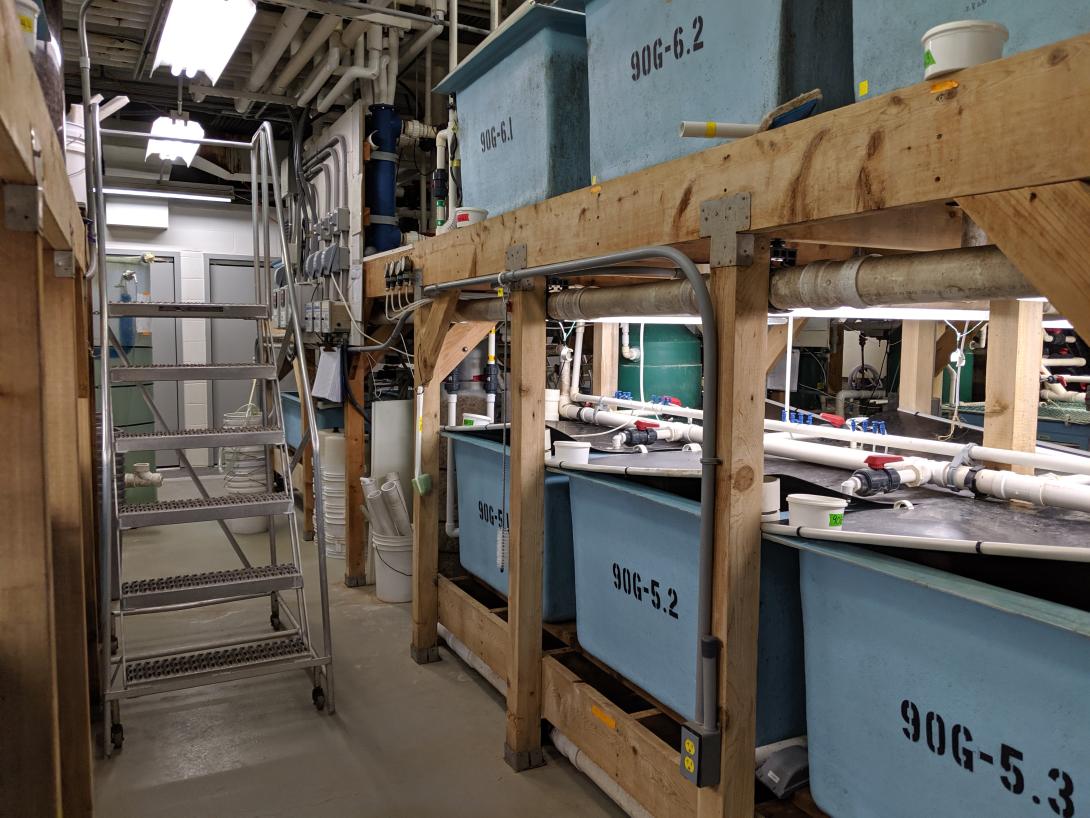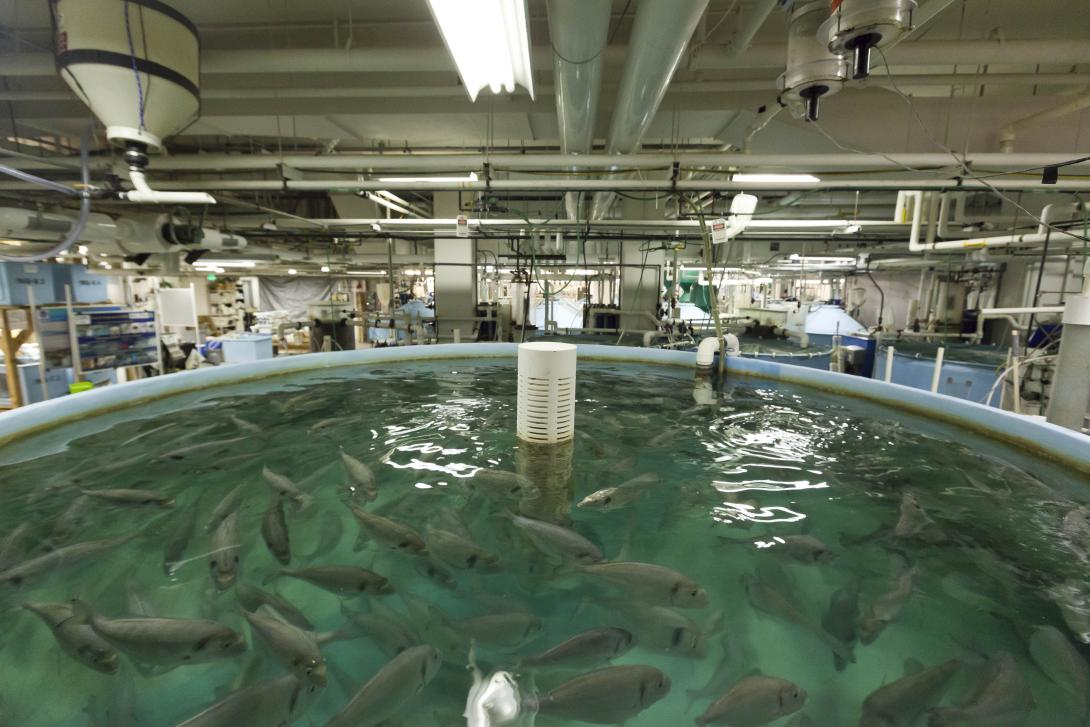Jorge Gomezjurado returns to IMET
Jorge Gomezjurado recently joined the lab of Dr. Ten-Tsao Wong to support research on sterility in fish, including tilapia, Atlantic salmon, and rainbow trout. While he has only been working on this project for a few months, Gomezjurado is not a newcomer to aquaculture or to IMET. He got his start breeding seahorses for the National Aquarium in IMET’s Aquaculture Research Center (ARC). Since then, he’s worked on raising blue crabs, cobia, Atlantic bluefin tuna, shrimp, and European seabass, and on production of live feeds for science research and industry.

When did you first come to Baltimore?
I first came to Baltimore in 1999 and started working in the Columbus Center, where IMET is housed. I developed and managed the seahorse breeding program at the National Aquarium in Baltimore to support the exhibit “Seahorses: Beyond Imagination.” In 2006, I started up Draco Marine Aquaculture LLC (DMA), a company dedicated to the commercial production of seahorses for the aquarium trade. Seahorses are fascinating animals. They are the only species in which the male gets pregnant. Seahorses, which pair up for life, do a mating display dance, in which the female transfers eggs to the male’s pouch, where they are fertilized. After about 14 days depending on the species, the male gives birth to fully formed, live seahorses. A male will typically give birth in early morning and mate again in mid-morning, essentially remaining pregnant throughout his adult life.
How did you first get involved with IMET research?
In 2008, after working in the ARC area for nine years, I joined the blue crab (Callinectes sapidus) breeding program under Dr. Yonathan Zohar and Odi Zmora. From 2013-2018, I managed the Atlantic bluefin tuna (Thunnus thynnus) breeding program. I designed and built a system to raise their larvae. This was an instrumental tool to raise bluefin tuna juveniles to 72 days old using a recirculating Aquaculture System (RAS). IMET became the first lab to succeed in raising bluefin tuna to this stage in the Americas. I also worked on other research projects at IMET for raising European seabass (Dicentrarchus labrax.) I worked on improving the production of rotifers for our hatchery, developing an innovative one-step diet, and an automated liquid feed delivery system for high density production.

You left IMET in 2018 and just returned. What were you up to for those couple of years while you were away?
I worked as a freelance aquaculture consultant, primarily for Industrial Pesquera Santa Priscila, the largest producer of white leg shrimp (Litopenaeus vannamei) in Ecuador. I also consulted for Iwaki Aquatic, a company offering system solutions to biomedical research labs using aquatic animals like Zebrafish and Xenopus frogs.
In the Aquaculture Research Center at IMET, we use a recirculating aquaculture system. This system is completely closed off from the natural environment. Fish swim in indoor tanks and the water we use is treated in-house. In another type of aquaculture called Net Pen Aquaculture, there are nets of farmed fish submerged in the ocean. In this system, it is possible for some of the farmed fish to escape into the natural environment. While IMET does not use this system, our scientists, including Dr. Ten-Tsao Wong and Jorge Gomezjurado, work on solutions to make this system more sustainable.
What are you working on now in Dr. Ten-Tsao Wong’s Lab?
I am working on technologies to produce sterile fish for the aquaculture industry. At the moment I’m designing a recirculating system with a series of tanks to facilitate our work with different replicate and control experimental groups using juvenile fish that have received our sterilization treatments. We’re working on these experiments with tilapia, Atlantic salmon, and rainbow trout.

Why is it important to have sterile fish?
In terms of environmental sustainability, the inevitable occurrence of fish escapes is one of the main challenges encountered by the aquaculture industry. We want to produce sterile fish so we can eliminate the possibility that fish who escape captivity will reproduce or cross reproduce with native wild fish populations. Another important aspect of this technology is that sterile fish convert their feed energy into muscle growth, rather than production of gonads for reproduction. This means that farmers can raise fish faster and less expensively.
Why is it exciting to work in aquaculture?
For me, it is so satisfying to see and have the entire lifecycle of a fish in my hands. I condition broodstock to spawn and produce high quality eggs, then see the embryos developing, hatching, and having their first feeding. I raise the juveniles and later produce a healthy, sustainably produced fish that we can eat! It’s a good feeling.